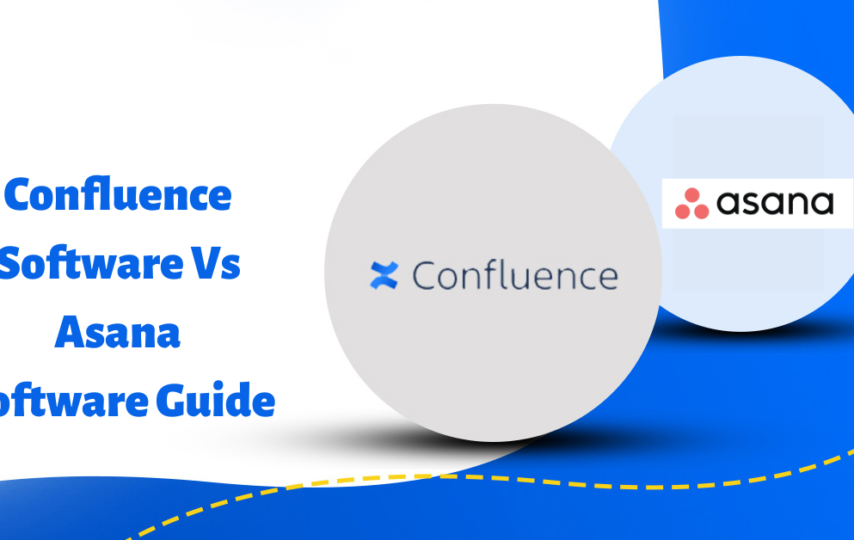Confluence allows your team to work in an open and collaborative manner, bringing out the best results. The more individuals in an organization who use it, the more value teams receive from it from technical teams and project management to marketing, HR, and finance. With Asana, no matter where they are situated or how many departments are involved, teams can accomplish more by moving faster and with greater confidence. It deals with various tasks such as product launching, marketing campaigns etc.
To gain an insight into the differences between these two software’s, keep reading this Confluence vs Asana guide.
Confluence Software
Confluence makes it simple to organize and locate the data you require. In a designated area for your work, your team, or cross-functional projects, group relevant pages together. A place in Confluence software can be made available to you alone or to the entire business, depending on permissions. Page trees, which organize pages into a hierarchical list, highlight content on parent pages and promote organization. Its key features are:
Unlimited pages and spaces
It allows you to create as much content as your team requires. Marketplace apps make it simple to add more power to your pages so you can produce your best work, whether you want to incorporate diagrams, exhibit design prototypes, or interact with other well-known programs like Google Drive or Salesforce.
App Integration
Atlassian products and Confluence integrate perfectly. Its pages make a fantastic backdrop for Trello cards and boards or Jira Software tickets. Copying and pasting Jira tickets into Confluence pages is easy. You can also right-click on highlighted text to add new tickets to your page immediately. Trello users who use Confluence can change their cards directly from Confluence pages.
Supports up to 10 users
It allows multiple users at a time. Also gives your team the tools they need to communicate and work together fast. This allows teams to collaborate and increase workflow, hence leading to faster results.
Confluence Demo
A demo always helps to allow users and subscribers to understand the features of a certain software. The website offers a free demo which can be requested in order to gain insight regarding the tool.
Confluence Pricing
There are four options available for Confluence pricing: The first one is Free and can be used by up to 10 users. The free version is more feasible for small teams to document information. The standard plan is for $55/month and can have almost 20,000 users. The third option is the premium option billed $105 per month. It is integrated with the complete range of features provided by the software. The last one is enterprise and can be accessed only once subscribed to the option.
Asana Software
From routine activities to long-term projects, Asana software assists teams in organizing their work. Teams are more assured, work more quickly, and complete more tasks with Asana, regardless of where they are or how many departments are involved. No matter how many teams or departments are working on a project together, Asana enables them to share context, assign ownership to tasks, combine relevant work, share files, receive real-time updates, and create efficient cross-functional processes. Some features of the software include:
Multiple Project Views
Users of this software can monitor projects and manage tasks using a variety of tools, such as Kanban boards, lists, calendars, workloads, and deadlines. It’s great to see that Asana gives you every choice you could possibly need when most project management systems on the market only offer one or two views.
Collaboration
Asana is one of the few tools that can serve as a single source of truth for file sharing, including Google Docs, PDFs, and JPGs, as well as for team and group communication. Users may centralize everything in one location by assigning tasks to team members, creating task dependencies, assigning priority, setting due dates, adjusting due dates, and chatting back and forth all inside a single card. Teams may work around each other’s schedules and stay informed of any new developments or progress using calendar view instead of exchanging back-and-forth emails.
Flexibility
Asana is a versatile and adaptable project management programme that can be used with a wide range of management approaches, company sizes, and industries. It’s also a wonderful option for operations, human resources, IT, finance, and many other departments. Also, it can be used by all businesses, be it small-scale. Medium sized or large enterprises.
Asana Demo
The Asana demo is really engaging because it is made with the client’s expectations in mind. Additionally, the project tracking, collaboration, and document management tools are displayed in the Asana software demo. All of these features draw users in and persuade them to buy the software in order to manage their project management process.
Asana Pricing
The software offers four pricing plans for its users which include the free version. Even though the free version does not cost anything, it still has many significant features ans tools available for users. the premium that costs $13.49/month, the business plan for $30.49/month and the enterprise for which the cost is not available but can be asked by contacting sales.
Conclusion
Teams can track their work with Asana the quickest. Asana gives teams the tools they need to complete things from start to end and produce outcomes, from tasks and projects to chats and dashboards. available on iOS and Android devices and at asana.com. The description of Confluence, on the other hand, states that it is “One place to share, find, and collaborate on knowledge.” Instead of losing knowledge on shared network drives and email inboxes, put it in Confluence, where it’s simple to locate, use, and update. Both software’s have their pros and cons and one should choose according to his necessity and focus on the key features.













